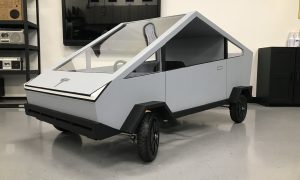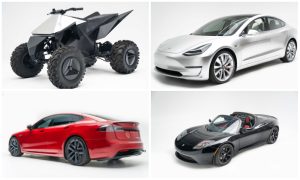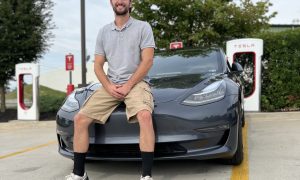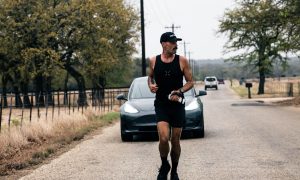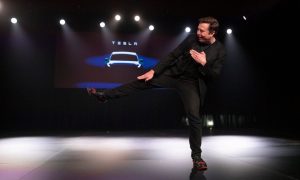News
NHTSA says your Tesla can’t be this quiet starting Sept., 2019
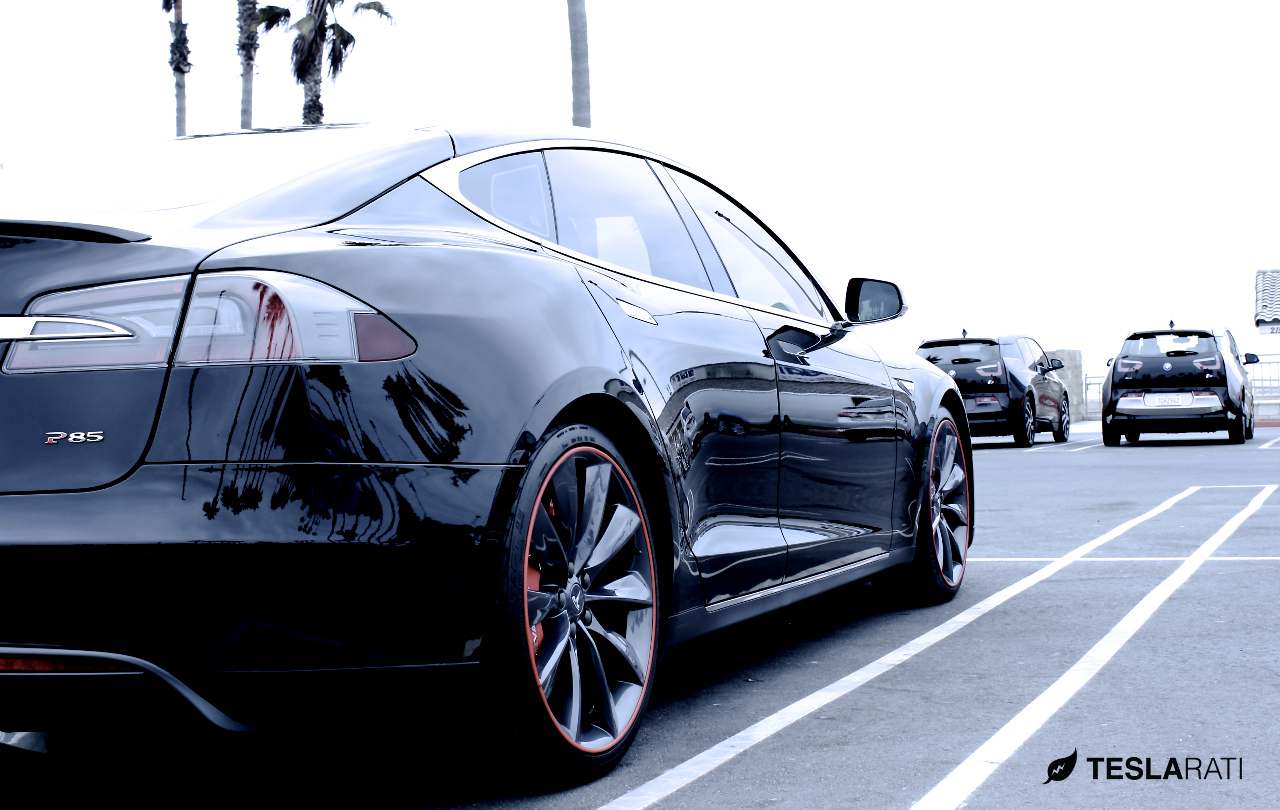
We at Teslarati are all in favor of making vehicles as safe as possible. Indeed, in our research and analysis of Teslas, we were proud early on in 2013 when the National Highway Traffic Safety Administration (NHTSA) awarded the Tesla Model S a 5-star safety rating, not just overall, but in every subcategory without exception. It was so safe, in fact, that the all-electric sedan broke the testing equipment at an independent commercial facility. Fast-forward to 2015. The Model X was the first SUV to be five-star in every category, according to Tesla CEO Elon Musk. It even won the prestigious Golden Steering Wheel (Das Goldene Lenkrad) award for best SUV this year.
Safety is important and should be primary to any driving situation. It should prevail over luxury features, style, and even comfort. However, a new NHTSA regulation that purports to target safety in its language is little more than a superficial gesture within a larger framework of driver, passenger, and pedestrian concerns.
Federal Motor Vehicle Safety Standard No. 141, which will begin on September 1, 2019, requires all newly manufactured hybrid and electric light-duty vehicles to make an audible noise at speeds below 19 mph. The sound requirement has been designed to help pedestrians who are blind, have low vision, cyclists, and other pedestrians to detect the presence, direction, and location of hybrids and EVs traveling at low speeds. At higher speeds, the sound alert will not be required because other factors, such as tire and wind noise, seem to provide adequate audible warning to pedestrians and will not be the subject of this regulation.
“We all depend on our senses to alert us to possible danger,” said U.S. Transportation Secretary Anthony Foxx. “With more, quieter hybrid and electrical cars on the road, the ability for all pedestrians to hear as well as see the cars becomes an important factor of reducing the risk of possible crashes and improving safety.”
Creating a social environment in which all individuals — especially those with disabilities, underrepresented groups, children, and the elderly — are physically and psychologically welcomed and safe is absolutely paramount to a healthy community. Manufacturers and drivers of hybrids and EVs do have a responsibility to contribute to such an environment.
Yet, clearly, we have a generation who has been accustomed to the sounds and smells of internal combustion engines. Wouldn’t driver and pedestrian education be a more efficacious way to ensure that hybrids and EVs do not pose a safety threat? Daniel Kahneman’s (2013) work, Thinking Fast and Slow, suggests that innovative products require a higher degree of learning than existing products. Education to help EV drivers and individuals who do not have personal access to hybrids and EVS, thus, who have not built in conscious mechanisms toward the awareness of hybrids and EVs in traffic, would have longer lasting and more permanent results.
Making the case for educating pedestrians
As the general population increases its awareness of the risks of pollution to both health and the environment, the internal combustion engine has become less desirable. As a result, battery-powered, fuel-cell electric, and hybrid vehicles are technologically viable alternatives to the internal combustion engine. And they’re beginning to take on a significant segment of the U.S. vehicle market.
Essentially, an internal combustion engine works like a cannon. The sound that results is formidable and part of our collective U.S. psyche. It is ingrained in our psychological expectations of what an engine should be. Electric motors, however, make very little noise compared with an internal combustion engine. Research on the safety implications of quiet electric vehicles has mostly focused on pedestrians’ acoustic perception of EVs and suggests that EVs compromise traffic safety. However, Cocran & Krems‘ 2013 research determined that, based on gained individual experience, drivers adjust their evaluation of noise-related hazards. Some statistical observation studies in literature indicate that hybrid or EV drivers intend to be more careful, less risk takers in traffic (Horswill and Coster 2002). Thus, it makes sense to increase the awareness factors for everyone — EV drivers and pedestrians — to create more robust safe traffic situations when EVs are added to the vehicle mix.
Adding to the sound mix
Principles to increase awareness of hybrids and EVs have generally focused on alerts, or sounds that indicate the presence of an EV. Other principles, such as orientation mechanisms, which make it possible to determine where the vehicle is located, roughly how fast it is going, and whether it is moving toward or away from the listener, extend beyond mere white or overt noises.
Education transcends any of these physical additions to a hybrid or EV. Hybrid and EV drivers as well as pedestrians should be exposed to new conceptual thinking about the place of EVs in traffic situations. Alongside the new federal safety standard that requires low speed noise, hybrid and EV automakers can build in specific educational materials to prepare their consumer base for new driving situations, which will continue to add safety awareness. With access to multiple new technologies, drivers could have multimodal educational opportunities.
- Audio systems could provide periodic, random reminders to increase driver awareness of pedestrians and cyclists in slow speed situations.
- Automakers could require that drivers work through a series of interactive online tutorials that accentuate driver understanding of slow speed safety adaptations with hybrids and EVs.
- Traditional print manuals should include dedicated sections that address slow speed driver safety decision making.
- Before-driving checklists should include explicit instruction in slow speed situations and the possibility of pedestrian interactions.
Consumer safety groups can also assume responsibility for educating their constituents about new needs for pedestrian and cyclist awareness.
- Cyclist advocacy organizations can provide seminars to their members during events to increase strategies for hybrid and EV slow speed situations.
- Existing support groups for persons with visual impairment can add workshops about hybrid and EVs to empower them to anticipate potential slow speed traffic situations.
- Minimal training standards for service animals could include special animal recognition of hybrid and EVs.
- Traditional and highly respected elderly advocacy organizations like AARP could provide print and online materials to help a generation who grew up with internal combustion engines to accommodate strategies to recognize hybrids and EVs in traffic.
Yes, adoption and diffusion of new innovations can be a long-term, complicated process. Airbags, child safety features, exhaust gas hazard, seat belts, and driver assist technologies currently provide hybrid and EV drivers with a toolkit of pedestrian safety measures. But we want more than to prevent what NHTSA says is about 2,400 pedestrian injuries each year that occur during low speed hybrid or EV/ pedestrian interactions. We want to create a cultural climate in which a social vehicular knowledge base extends well beyond the internal combustion engine.
News
Tesla cleared in Canada EV rebate investigation
Tesla has been cleared in an investigation into the company’s staggering number of EV rebate claims in Canada in January.

Canadian officials have cleared Tesla following an investigation into a large number of claims submitted to the country’s electric vehicle (EV) rebates earlier this year.
Transport Canada has ruled that there was no evidence of fraud after Tesla submitted 8,653 EV rebate claims for the country’s Incentives for Zero-Emission Vehicles (iZEV) program, as detailed in a report on Friday from The Globe and Mail. Despite the huge number of claims, Canadian authorities have found that the figure represented vehicles that had been delivered prior to the submission deadline for the program.
According to Transport Minister Chrystia Freeland, the claims “were determined to legitimately represent cars sold before January 12,” which was the final day for OEMs to submit these claims before the government suspended the program.
Upon initial reporting of the Tesla claims submitted in January, it was estimated that they were valued at around $43 million. In March, Freeland and Transport Canada opened the investigation into Tesla, noting that they would be freezing the rebate payments until the claims were found to be valid.
READ MORE ON ELECTRIC VEHICLES: EVs getting cleaner more quickly than expected in Europe: study
Huw Williams, Canadian Automobile Dealers Association Public Affairs Director, accepted the results of the investigation, while also questioning how Tesla knew to submit the claims that weekend, just before the program ran out.
“I think there’s a larger question as to how Tesla knew to run those through on that weekend,” Williams said. “It doesn’t appear to me that we have an investigation into any communication between Transport Canada and Tesla, between officials who may have shared information inappropriately.”
Tesla sales have been down in Canada for the first half of this year, amidst turmoil between the country and the Trump administration’s tariffs. Although Elon Musk has since stepped back from his role with the administration, a number of companies and officials in Canada were calling for a boycott of Tesla’s vehicles earlier this year, due in part to his association with Trump.
News
Tesla Semis to get 18 new Megachargers at this PepsiCo plant
PepsiCo is set to add more Tesla Semi Megachargers, this time at a facility in North Carolina.

Tesla partner PepsiCo is set to build new Semi charging stations at one of its manufacturing sites, as revealed in new permitting plans shared this week.
On Friday, Tesla charging station scout MarcoRP shared plans on X for 18 Semi Megacharging stalls at PepsiCo’s facility in Charlotte, North Carolina, coming as the latest update plans for the company’s increasingly electrified fleet. The stalls are set to be built side by side, along with three Tesla Megapack grid-scale battery systems.
The plans also note the faster charging speeds for the chargers, which can charge the Class 8 Semi at speeds of up to 1MW. Tesla says that the speed can charge the Semi back to roughly 70 percent in around 30 minutes.
You can see the site plans for the PepsiCo North Carolina Megacharger below.

Credit: PepsiCo (via MarcoRPi1 on X)

Credit: PepsiCo (via MarcoRPi1 on X)
READ MORE ON THE TESLA SEMI: Tesla to build Semi Megacharger station in Southern California
PepsiCo’s Tesla Semi fleet, other Megachargers, and initial tests and deliveries
PepsiCo was the first external customer to take delivery of Tesla’s Semis back in 2023, starting with just an initial order of 15. Since then, the company has continued to expand the fleet, recently taking delivery of an additional 50 units in California. The PepsiCo fleet was up to around 86 units as of last year, according to statements from Semi Senior Manager Dan Priestley.
Additionally, the company has similar Megachargers at its facilities in Modesto, Sacramento, and Fresno, California, and Tesla also submitted plans for approval to build 12 new Megacharging stalls in Los Angeles County.
Over the past couple of years, Tesla has also been delivering the electric Class 8 units to a number of other companies for pilot programs, and Priestley shared some results from PepsiCo’s initial Semi tests last year. Notably, the executive spoke with a handful of PepsiCo workers who said they really liked the Semi and wouldn’t plan on going back to diesel trucks.
The company is also nearing completion of a higher-volume Semi plant at its Gigafactory in Nevada, which is expected to eventually have an annual production capacity of 50,000 Semi units.
Tesla executive teases plan to further electrify supply chain
News
Tesla sales soar in Norway with new Model Y leading the charge
Tesla recorded a 54% year-over-year jump in new vehicle registrations in June.

Tesla is seeing strong momentum in Norway, with sales of the new Model Y helping the company maintain dominance in one of the world’s most electric vehicle-friendly markets.
Model Y upgrades and consumer preferences
According to the Norwegian Road Federation (OFV), Tesla recorded a 54% year-over-year jump in new vehicle registrations in June. The Model Y led the charge, posting a 115% increase compared to the same period last year. Tesla Norway’s growth was even more notable in May, with sales surging a whopping 213%, as noted in a CNBC report.
Christina Bu, secretary general of the Norwegian EV Association (NEVA), stated that Tesla’s strong market performance was partly due to the updated Model Y, which is really just a good car, period.
“I think it just has to do with the fact that they deliver a car which has quite a lot of value for money and is what Norwegians need. What Norwegians need, a large luggage space, all wheel drive, and a tow hitch, high ground clearance as well. In addition, quite good digital solutions which people have gotten used to, and also a charging network,” she said.
Tesla in Europe
Tesla’s success in Norway is supported by long-standing government incentives for EV adoption, including exemptions from VAT, road toll discounts, and access to bus lanes. Public and home charging infrastructure is also widely available, making the EV ownership experience in the country very convenient.
Tesla’s performance in Europe is still a mixed bag, with markets like Germany and France still seeing declines in recent months. In areas such as Norway, Spain, and Portugal, however, Tesla’s new car registrations are rising. Spain’s sales rose 61% and Portugal’s sales rose 7% last month. This suggests that regional demand may be stabilizing or rebounding in pockets of Europe.
-

 Elon Musk2 weeks ago
Elon Musk2 weeks agoTesla investors will be shocked by Jim Cramer’s latest assessment
-

 Elon Musk2 days ago
Elon Musk2 days agoxAI launches Grok 4 with new $300/month SuperGrok Heavy subscription
-

 Elon Musk4 days ago
Elon Musk4 days agoElon Musk confirms Grok 4 launch on July 9 with livestream event
-

 News1 week ago
News1 week agoTesla Model 3 ranks as the safest new car in Europe for 2025, per Euro NCAP tests
-

 Elon Musk2 weeks ago
Elon Musk2 weeks agoA Tesla just delivered itself to a customer autonomously, Elon Musk confirms
-

 Elon Musk1 week ago
Elon Musk1 week agoxAI’s Memphis data center receives air permit despite community criticism
-

 News2 weeks ago
News2 weeks agoXiaomi CEO congratulates Tesla on first FSD delivery: “We have to continue learning!”
-

 News2 weeks ago
News2 weeks agoTesla sees explosive sales growth in UK, Spain, and Netherlands in June


